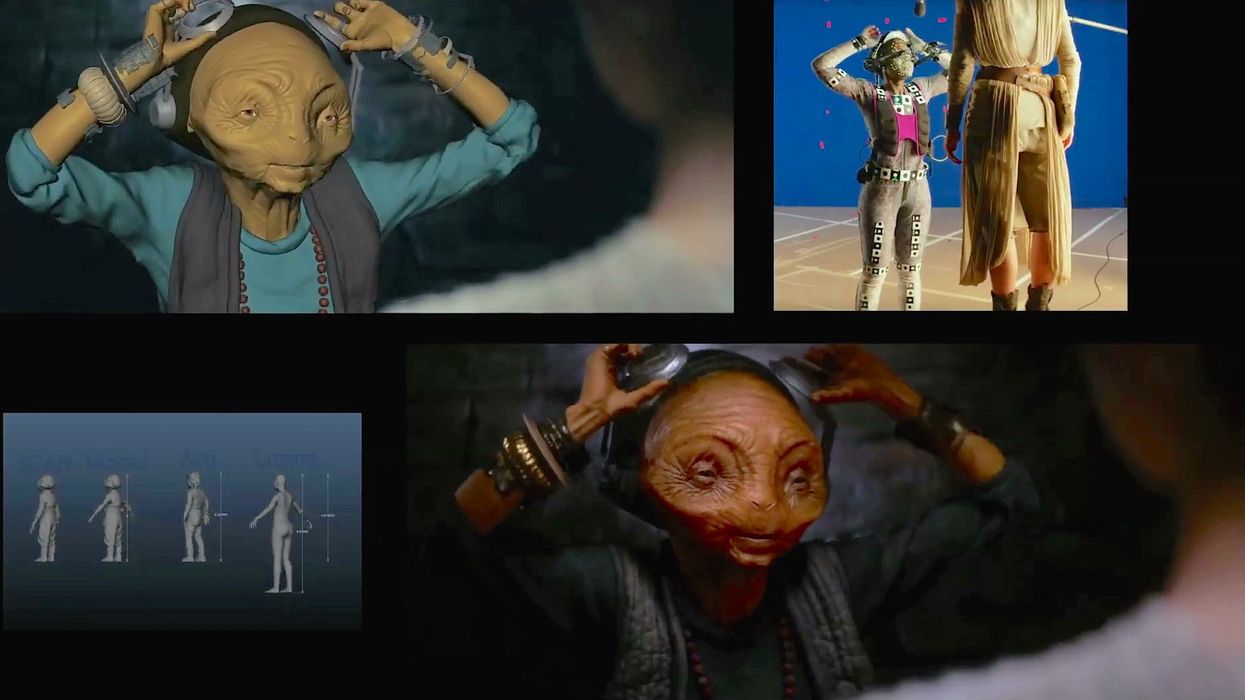Go Behind the Scenes of the Oscar-Nominated VFX for 'Star Wars: The Force Awakens'
Though the Academy Award-nominated Star Wars: The Force Awakens used a ton of practical effects, it likely had more VFX work than any SW film to date.

None of the major space battles were done with physical models for obvious reasons, but some pieces were real, and a lot of the VFX work in general was to augment, as opposed to creating entire sets in post (which certainly was done a number of times). In a video that has been circling around the internet the past few days, originally posted by the Oscars YouTube channel (and since removed), we get a great sense of how much was done in-camera vs. in post-production, and how CG was used to complete shots that would have been impossible or extremely difficult with just practical elements (WARNING — there are some spoilers in this, only watch if you've seen the film or don't care):
https://www.dailymotion.com/video/x3may5f_fa-vfx_shortfilms
I think they struck a great balance between paying homage to the original films and pushing forward with digital technology. A character that's as expressive as Maz would have been difficult to create even back during the prequels (Yoda is our best example), but motion capture technology has improved to an unbelievable degree, and we can get truly moving performances from CG characters thanks to the actors involved. There's no doubt we're going to see this balance tested again with the next films, especially as the directors of those movies try to move the story forward. With input from Abrams, I would expect to see lots of practical elements augmented with CG in the 8th and 9th films, perhaps even more than we saw in The Force Awakens.
For more on the effects, we've also got a terrific conversation with ILM VFX supervisors Roger Guyett and Patrick Tubach from David Poland:
Patrick makes a great point in the video, that there is only so much that can be done practically. As much as we want actual objects that feel real, it limits what you can do visually to a certain extent — and it's part of the reason George Lucas went back to a movie like A New Hope and used CG for the final Death Star scene. It might be worth pointing out here that even though many think the Star Wars prequels are full of fake CG, there were a massive amount of practical effects and miniatures:
Patrick also notes that something like the Millennium Falcon chase through the desert would have been impossible in the days of Episode III, which was a little over a decade ago. So even though we think about this new film going back to doing practical effects, they are still breaking new ground with CG as computers get more powerful by leaps and bounds.
Roger mentions around 27 minutes that one of the things they focused on to keep the digital effects feeling as sincere as possible was to always consider how something would actually be photographed if you were doing it for real. I think this is partly why people are thrown off by digital effects, because the digital camera is often doing all sorts of things that could never be done with a real camera, and your mind instantly flips a switch and sees through the effect.
In the end, it all comes down to storytelling for these artists. They are constantly trying to challenge themselves, but it has to serve the film and the story that's being told.


 No Film School's coverage of
No Film School's coverage of 









